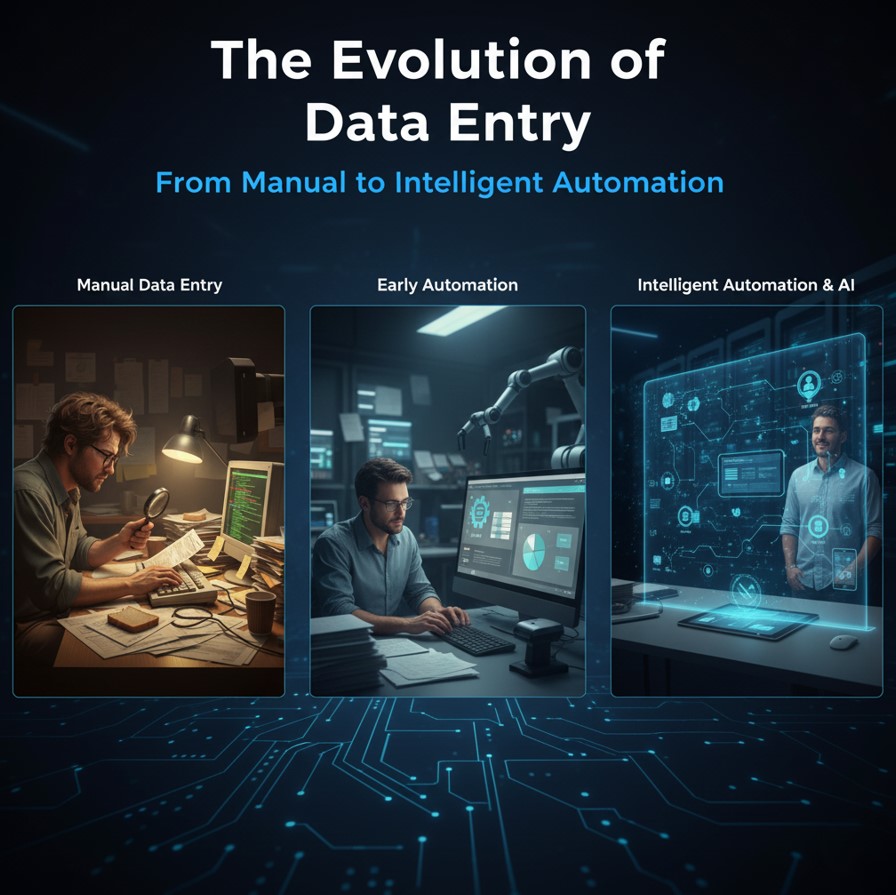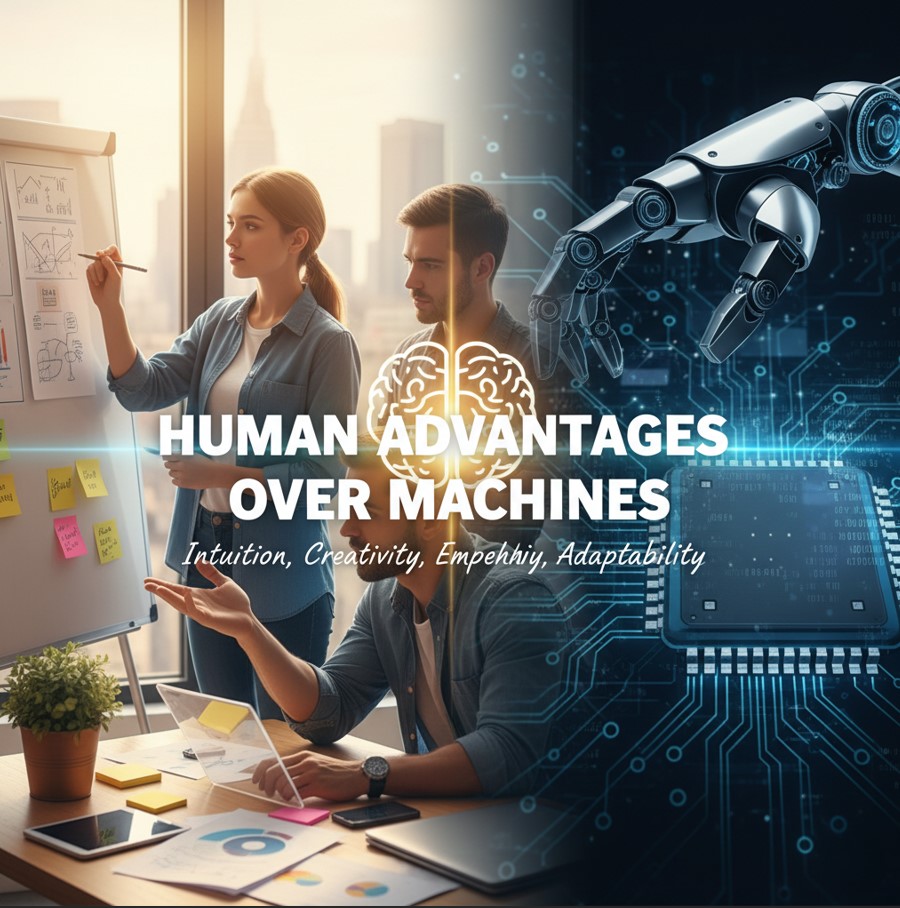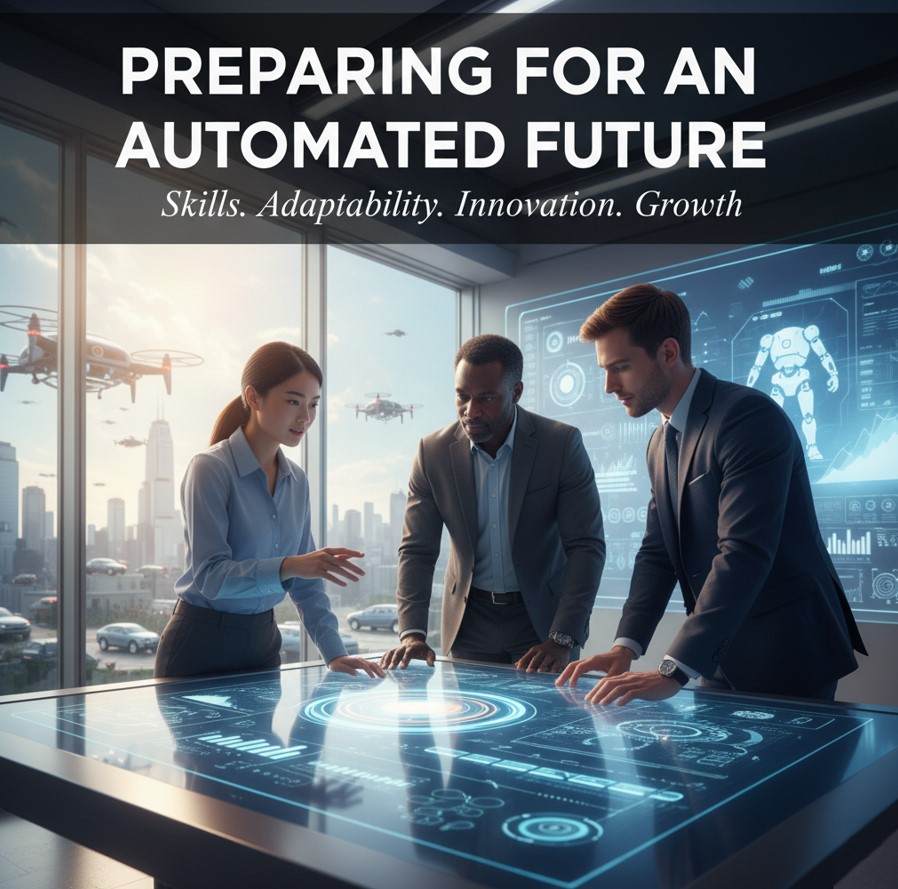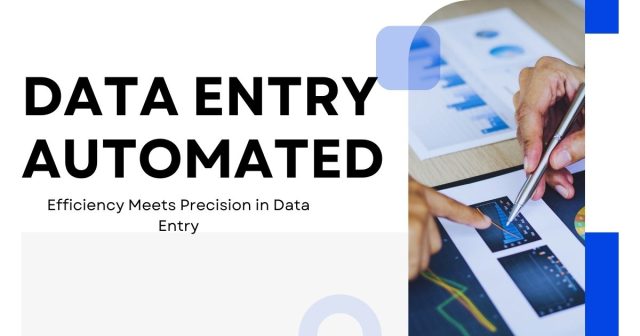Data entry has long been considered one of the foundational tasks in businesses around the world. From inputting customer information into databases to maintaining records, these roles are essential for smooth business operations. However, as technology advances, a pressing question arises: will data entry jobs be automated?
With artificial intelligence (AI), robotic process automation (RPA), and intelligent data capture tools becoming increasingly sophisticated, it is natural to wonder whether the human role in data entry will diminish. Automation has already transformed many industries, and data entry seems especially vulnerable because much of the work is repetitive, rule-based, and predictable. Yet, the reality is nuanced. Automation is not merely replacing humans; it is transforming the nature of data entry work.
The Evolution of Data Entry
Data entry started as a purely manual function, requiring staff to key in information from paper forms, invoices, or handwritten notes. Accuracy, speed, and attention to detail were the primary skills required. Over the years, software tools like spreadsheets and database management systems simplified the work, but the core task remained largely unchanged: transcribe and organize data efficiently.
The digital revolution brought new opportunities for automation. Optical character recognition (OCR) allowed computers to read printed and handwritten text, reducing manual typing. Cloud-based systems enabled real-time data sharing and updates, eliminating redundancies. Today, AI-driven solutions can even classify and validate data, flag inconsistencies, and integrate it seamlessly into business workflows.

Why Data Entry Is Ideal for Automation
Several characteristics of data entry make it an ideal candidate for automation. First, the tasks are often repetitive and rules-based. For example, copying data from one form to another or inputting structured information into a CRM system does not usually require interpretation beyond basic validation rules.
Second, the volume of data can be enormous, making manual entry both time-consuming and error-prone. Even the most meticulous human operator can make mistakes when handling thousands of records daily. Automation excels in handling large datasets quickly and accurately.
Third, advances in AI allow systems to go beyond simple transcription. Modern tools can intelligently process documents, extract key information, categorize it, and even predict missing data points. This level of sophistication reduces the need for human oversight in many routine tasks, making automation increasingly viable.
Jobs at Risk
Not all data entry jobs are equally vulnerable. Roles that involve straightforward, repetitive input are most likely to be automated. Examples include:
- Entering invoice details into accounting systems
- Transferring customer information from forms to databases
- Copying product information into e-commerce catalogs
These tasks are highly predictable, rule-based, and require minimal interpretation. AI and RPA tools can perform them faster, with fewer errors, and at a lower cost. For businesses, this is attractive because it reduces labor costs while increasing efficiency.
Roles That Will Evolve
While basic data entry is susceptible to automation, jobs that require human judgment, problem-solving, or contextual understanding are less likely to disappear. For instance, data validation, quality checks, exception handling, and analysis require critical thinking. Automated systems may flag anomalies, but humans are still needed to investigate and resolve them.
Additionally, employees who can oversee, manage, and optimize automated workflows will become increasingly valuable. The focus shifts from manual input to workflow management, data integrity, and interpretation. In this sense, data entry roles are evolving rather than vanishing.
Human Advantages Over Machines
Even the most advanced AI systems have limitations. Machines excel at repetitive, high-volume tasks, but they struggle with ambiguity, context, and nuance. For example, deciphering poorly written forms, understanding subtle inconsistencies, or interpreting handwritten notes may still require human intelligence.
Moreover, humans provide oversight that machines cannot replicate. Implementing automation requires careful monitoring, maintenance, and exception handling. Data entry professionals will increasingly serve as supervisors of automated systems, ensuring that data remains accurate and actionable.
The combination of human expertise and machine efficiency creates a hybrid model. Employees focus on value-added tasks while automation handles routine operations. This collaboration enhances productivity and reduces errors while allowing workers to engage in more meaningful and analytical tasks.

Industries Already Embracing Automation
Several industries are leading the charge in automating data entry:
- Finance and Accounting – Invoices, receipts, and transaction data are now processed using RPA and AI, reducing manual bookkeeping.
- Healthcare – Patient records, insurance claims, and medical data are being digitized and automatically categorized, improving accuracy and compliance.
- E-commerce – Product listings, inventory updates, and order information are increasingly automated to handle massive volumes of data efficiently.
- Customer Relationship Management (CRM) – Contact information, lead tracking, and engagement data can now be captured automatically from emails, forms, and interactions.
These industries show that automation is not just theoretical—it’s already reshaping workflows, improving efficiency, and reducing costs.
How Automation Changes Skill Requirements
For data entry professionals, automation changes the skillset required to remain relevant. Typing speed and accuracy alone are no longer enough. Instead, professionals need to:
- Understand and manage automation tools and software
- Monitor data quality and resolve exceptions
- Analyze trends and identify anomalies in data
- Collaborate with IT and operational teams to optimize workflows
This shift means that data entry is moving from a purely operational role to one that combines operational skills with analytical capabilities. Those who adapt to these changes will find their roles more strategic and resilient in the age of automation.
Preparing for an Automated Future
Employees can take several steps to prepare for an increasingly automated workplace. First, learning to use automation tools effectively is critical. Familiarity with RPA software, AI-driven data capture, and workflow management systems provides a competitive edge.
Second, developing analytical and problem-solving skills allows professionals to add value beyond what machines can do. Identifying patterns, validating data, and making decisions based on insights will be essential tasks.
Third, adaptability and continuous learning are crucial. Automation technologies evolve rapidly, and staying current with trends ensures that data entry professionals remain indispensable.
For businesses, a thoughtful approach to automation is necessary. Automation works best when it complements human expertise rather than replacing it entirely. Companies that embrace a hybrid model—where automation handles repetitive tasks and humans oversee quality and analysis—will see the greatest benefits in efficiency, accuracy, and employee satisfaction.
The Future of Data Entry Jobs
It is unlikely that all data entry jobs will disappear. Instead, the nature of the work will change. Simple, repetitive tasks will be automated, freeing human workers to focus on higher-level responsibilities. Data entry roles will evolve into positions that combine operational efficiency with analytical oversight.
As technology progresses, new opportunities may also arise. For example, data entry professionals could transition into data analysis, workflow optimization, or even roles in AI supervision and management. The key to future-proofing a career in data entry is adaptability, a willingness to learn new tools, and the ability to combine human intelligence with automated systems.
Ultimately, automation is not the enemy of data entry—it is a tool that can enhance productivity, reduce errors, and create more meaningful work. By embracing automation and developing complementary skills, data entry professionals can secure their place in the modern workforce.

Conclusion
The question of whether data entry jobs will be automated is less about replacement and more about transformation. Automation will take over repetitive, rule-based tasks, but human oversight, analysis, and problem-solving remain essential. The future of data entry is hybrid—a collaboration between human expertise and intelligent systems.
Professionals who embrace this shift and develop the skills needed to manage, monitor, and analyze automated workflows will remain in demand. Businesses that implement automation thoughtfully will see improved efficiency, accuracy, and employee satisfaction.
Automation in data entry is not the end of jobs; it is the beginning of a new era where work becomes smarter, faster, and more strategic. The key lies in adapting, learning, and leveraging technology to enhance human capabilities.







